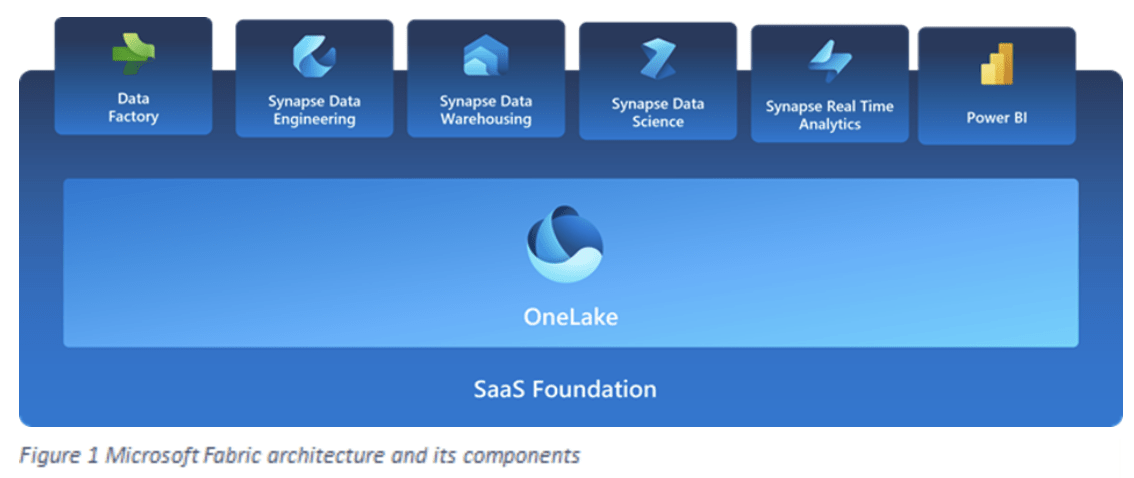
Microsoft Fabric: The Future of Analytics
Fabric is a word that has been used for centuries, but only more recently has its impact been more profound in the technology sector. Microsoft Fabric is a recent phenomenon, evolving from a combination of Power BI, Azure Synapse and Azure Data Factory. As the natural successor to these individual technologies, it brings exciting new features whilst promising an all-in-one analytics solution spanning everything from Data movement to Data science. The following article will delve into this a bit further to help you understand firstly, what Fabric is and secondly, why it is important.
Microsoft Fabric Evolution
The vision behind Microsoft Fabric stems from the desire to minimise the time spent on configuration and the management of infrastructure, shifting the focus towards time to value. Its journey to date initially began in 2018, where a Data Analytics solution simply required resources for storage, computing, orchestration, and visualisations. In 2019, Microsoft announced Azure Synapse Analytics with the vision to unify core resources into a single product. Following on from this vision, we have Microsoft Fabric where the data architecture can now be fully integrated and simplified into a single offering.
What is Fabric?
Microsoft Fabric is a fully integrated Microsoft-branded analytics platform, collating 7 of its key offerings into a single platform: Data Factory; Synapse Data Engineering, Synapse Data Science, Synapse Data Warehouse, Synapse Real Time Analytics; Power BI; in addition to the novel Data Activator. This is all built on what is termed ‘One Lake’ which stores data in a unified place where it can be easily accessed. It is delivered on a SaaS (Software as a Service) foundation, unique from its precursor Azure Synapse Analytics being a PaaS (Platform as a Service) thus Fabric requiring less management duties from the user. Together, this creates the following architecture

The Fabric Analogy
Think of it like previously having multiple individual components- for example, a TV to visualise the data, a camera to collect and take pictures of data and an app store to manage different applications e.g., Power BI. Now, imagine that you have a new smartphone (Fabric) that seamlessly integrates these functions into a single place alongside enhanced capabilities. With this smartphone (Fabric), you can directly link to the TV without any cables or remote controls (using Bluetooth) making it easier and faster and reducing the need for integrations. Fabric can also create new apps from scratch using AI-powered tools like Co-Pilot in Power BI or Data Explorer.
What are the Benefits of Fabric?
In addition to its simplicity and ease of use, Fabric offers innumerable benefits to the user. Being on a centralised platform offers several advantages: it enables seamless integration across data services, central administration, and governance and supports ease of access for developers meanwhile ensuring information is easily accessible and manageable from a single location.
Utilising a SaaS platform over a PaaS platform further advances simplicity and integration capabilities, while the new features provide access to the latest technology in line with market trends. The costing model also differs, which impacts both the total cost of ownership (TCO) and operating expenditure (OE), with possible savings through removing Azure managing costs.
The benefits on ROI are significant. A recent Forrester report (see here) shows three year ROI of 379% for an organisation that deployed Fabric, with the ROI made up of a combination of both cost savings/improved efficiencies and additional business benefits, highlighting the importance of data-driven decision making.
Things to consider about Fabric
While Fabric introduces several benefits and represents a major advance in Data Analytics, there are important factors to consider. It is worth highlighting that there is no direct upgrade path from Azure Synapse Analytics to Fabric, so different levels of effort are required to run on Fabric. The scale of the organisation also impacts the costing model, offering varying degrees of profit and/or financial loss despite the nature of SaaS over PaaS reducing costs. Other factors, such as vendor lock-in, organisational strategy, and long-term goals, should also be factored in.
As highlighted, the introduction of Fabric is an exciting asset to data analytics and should provide a host of exciting new features. Much like those white shoes you’ve had for years in your cupboard that are slowly turning grey, you will eventually get a new white pair, so like Fabric, the upgrade seems inevitable.
